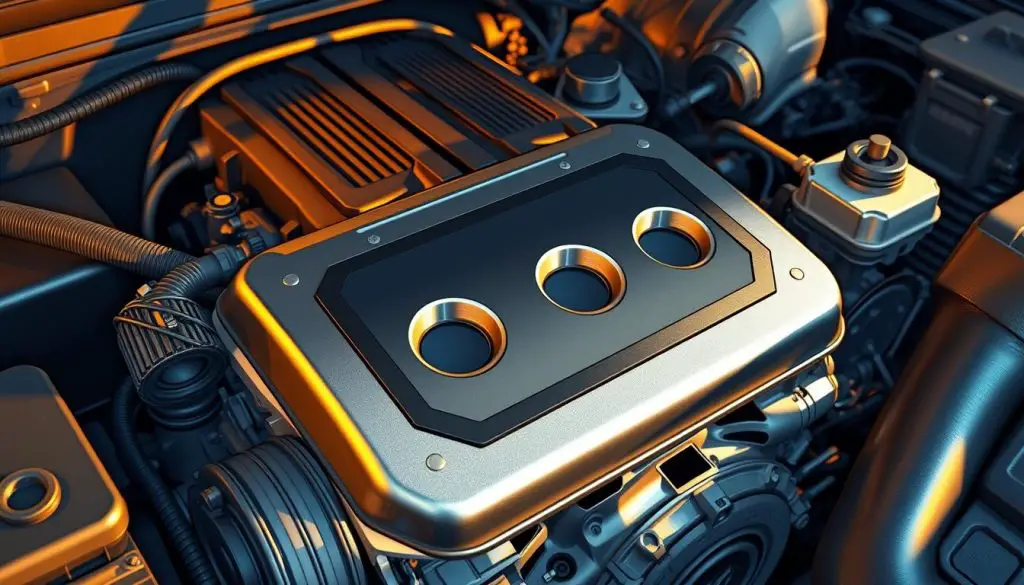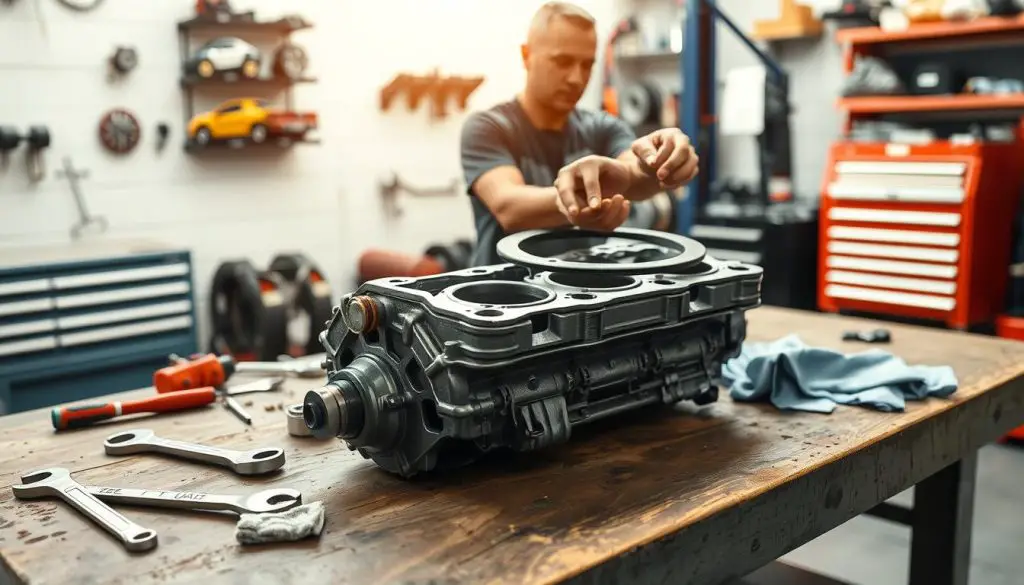Replacing the valve cover gasket in your Dodge vehicle is a significant repair that can be costly if not properly understood. The cost of replacement varies based on several factors, including the model of your vehicle, the extent of the damage, and whether you choose to do it yourself or hire a professional mechanic.
Understanding these factors is crucial to managing the repair cost effectively. Signs that indicate the need for valve cover gasket replacement include leaks, decreased engine performance, and visible damage.
Key Takeaways
- The cost of replacing a valve cover gasket can vary significantly based on the Dodge model.
- DIY replacement can save on labor costs but requires mechanical expertise.
- Professional replacement ensures quality but at a higher overall cost.
- Signs of a faulty valve cover gasket include oil leaks and decreased engine performance.
- Regular maintenance can help prevent the need for valve cover gasket replacement.
What Is a Valve Cover Gasket and Why It Matters
The valve cover gasket is a critical component in Dodge engines, playing a vital role in maintaining engine performance and preventing oil leaks. It serves as a seal between the valve cover and the engine cylinder head, ensuring that engine oil remains inside the engine.
Function of the Valve Cover Gasket in Dodge Engines
The primary function of the valve cover gasket is to prevent oil leaks from the engine. It seals the gap between the valve cover and the cylinder head, keeping the engine oil inside. This is crucial for maintaining engine performance and longevity. A faulty valve cover gasket can lead to oil leaks, which can cause damage to other engine components.
Common Materials Used in Dodge Valve Cover Gaskets
Dodge valve cover gaskets are typically made from materials such as rubber, silicone, or a combination of both. These materials provide a durable seal that can withstand the high temperatures and pressures inside the engine. The choice of material can affect the gasket’s performance and longevity. For instance, silicone gaskets are known for their high temperature resistance, while rubber gaskets are more flexible and can provide a tighter seal.
Signs Your Dodge Needs a Valve Cover Gasket Replacement
Recognizing the symptoms of a worn-out valve cover gasket is essential for preventing further damage to your Dodge engine. A failing gasket can lead to various issues that, if addressed promptly, can save you from costly repairs down the line.
Oil Leaks and Their Locations
One of the most common signs of a failing valve cover gasket is the presence of oil leaks. These leaks are often visible around the valve cover area. Inspect your engine for any signs of oil leakage, as this can indicate a compromised gasket.
Engine Performance Issues
A damaged valve cover gasket can also lead to engine performance issues. Symptoms may include rough idling, decreased engine power, or an overall decrease in engine efficiency. These issues arise because the leaking gasket can allow oil to enter areas it shouldn’t, potentially causing spark plug fouling.
Burning Oil Smell and Other Warning Signs
A burning oil smell is another indicator of a valve cover gasket problem. When oil leaks onto hot engine parts, it can produce a distinct burning smell. Other warning signs include increased oil consumption and the presence of oil on the spark plugs or around the valve cover.
| Symptom | Description |
|---|---|
| Oil Leaks | Visible oil around the valve cover area |
| Engine Performance Issues | Rough idling, decreased power, or efficiency |
| Burning Oil Smell | Distinct smell when oil leaks onto hot engine parts |
Dodge Valve Cover Gasket Replacement Cost Breakdown
The cost of replacing a Dodge valve cover gasket can vary significantly based on several factors, including the type of parts used and labor costs in your region.
OEM vs. Aftermarket Parts Pricing
When it comes to replacing a Dodge valve cover gasket, one of the primary cost considerations is the choice between Original Equipment Manufacturer (OEM) parts and aftermarket alternatives. OEM parts are made by the same manufacturer that produced the original gasket, ensuring a precise fit and high quality. Aftermarket parts, on the other hand, are produced by third-party companies and can vary in quality. While OEM parts are generally more expensive, they offer the assurance of meeting the manufacturer’s specifications.
A comparison of OEM and aftermarket prices is shown in the table below:
| Part Type | Average Price |
|---|---|
| OEM Valve Cover Gasket | $50-$100 |
| Aftermarket Valve Cover Gasket | $20-$50 |
Professional Labor Costs by Region
Labor costs for replacing a Dodge valve cover gasket can vary significantly depending on the region and the repair shop’s labor rate. Urban areas tend to have higher labor rates compared to rural areas. According to a recent survey, labor rates for this repair can range from $75 to $150 per hour.
“Labor costs can account for a significant portion of the total repair bill, so it’s essential to factor this into your budget.”
Dealership vs. Independent Shop Pricing
Another factor to consider is whether to use a dealership or an independent repair shop for the replacement. Dealerships typically charge more for labor and may use OEM parts, while independent shops might offer more competitive pricing and the option to use aftermarket parts. Comparing prices between different repair options can help you find the best value for your money.
Cost Variations Across Popular Dodge Models
Different Dodge models have distinct valve cover gasket replacement costs, influenced by factors like engine size and design. Understanding these variations is essential for Dodge owners to anticipate and budget for this repair.
Dodge Ram Series (1500, 2500, 3500)
The Dodge Ram series, known for its heavy-duty capabilities, has a valve cover gasket replacement cost that reflects its complex engine design. For the 1500, 2500, and 3500 models, the cost can range from $300 to $600, largely due to the varying engine sizes and the labor required for the replacement. Specifically, the 5.7L V8 engine in the Ram 1500 may have a lower replacement cost compared to the 6.7L Cummins Turbo Diesel engine found in the 2500 and 3500 models.

Dodge Charger and Challenger
For the Dodge Charger and Challenger, which are popular for their performance and power, the valve cover gasket replacement cost is generally between $250 to $500. The variation in cost is often attributed to the engine type, with the Hellcat and Scat Pack models typically being on the higher end of the cost spectrum due to their complex engine configurations.
Dodge Durango and Journey
The Dodge Durango and Journey, being SUVs with different engine configurations, also have varying costs for valve cover gasket replacement. The Durango, with its more robust engine options, can have a replacement cost ranging from $300 to $550, while the Journey, being a more compact SUV, might have a slightly lower cost, typically between $200 to $400.
DIY vs. Professional Replacement: Making the Right Choice
When considering a valve cover gasket replacement, one of the primary decisions you’ll face is whether to tackle the job yourself or seek professional help. This decision hinges on several factors, including your mechanical skill level, the time you can commit, and the specific needs of your Dodge vehicle.
Skill Level Assessment for DIY Approach
Before deciding on a DIY approach, it’s crucial to honestly assess your mechanical skills. Replacing a valve cover gasket involves several steps, including removing the valve cover, inspecting and cleaning the area, and installing a new gasket. If you’re comfortable with these tasks and have experience with similar repairs, DIY might be a viable option.
Time Commitment Considerations
Time is another critical factor. Valve cover gasket replacement can be time-consuming, especially if you’re not familiar with the process. Consider whether you have the hours needed to dedicate to this task without feeling rushed or compromising on quality.
When to Definitely Seek Professional Help
There are situations where seeking professional help is not just advisable but necessary. If your Dodge vehicle is still under warranty, attempting a DIY repair could void the warranty. Additionally, if you’re unsure about any aspect of the process or feel uncomfortable with the complexity of the task, it’s best to consult a professional mechanic.
| Consideration | DIY Replacement | Professional Replacement |
|---|---|---|
| Cost | Lower parts cost, but consider your time | Higher labor costs, but includes warranty |
| Skill Level | Requires mechanical aptitude | Handled by experienced professionals |
| Time Commitment | Significant time required | Quick, as professionals handle it |
DIY Valve Cover Gasket Replacement Guide
Tackling a valve cover gasket replacement yourself requires some mechanical aptitude, but it’s achievable with a detailed guide. Before starting, it’s crucial to understand the steps involved and the precautions to take.
Safety Precautions and Engine Preparation
Before beginning the replacement process, ensure your safety by wearing protective gear such as gloves and safety glasses. Prepare your engine by letting it cool down completely to avoid any burns or injuries. It’s also recommended to consult your vehicle’s repair manual for specific instructions related to your Dodge model.
Removing Components for Gasket Access
To access the valve cover gasket, you’ll need to remove several components. Start by disconnecting the negative battery cable to prevent any accidental engine starts. Then, remove the engine cover and any other components that obstruct access to the valve cover, such as the air intake duct. Carefully label and set aside any bolts or clips to ensure reassembly is straightforward.

Cleaning Mating Surfaces Properly
Once the valve cover is removed, clean the mating surfaces thoroughly to ensure a proper seal with the new gasket. Use a gasket scraper or a razor blade to remove any old gasket material, taking care not to scratch the surfaces. Clean the area with a solvent to remove any remaining debris.
Installing the New Gasket and Reassembly
With the mating surfaces clean, apply a thin layer of gasket sealant to the new gasket if recommended by the manufacturer. Install the new gasket onto the valve cover, ensuring it’s properly seated. Reassemble the components in the reverse order that they were removed, tightening bolts to the specified torque. For more detailed information on the replacement cost and process, you can visit this resource.
| Step | Description | Notes |
|---|---|---|
| 1 | Safety Precautions | Wear protective gear, let engine cool |
| 2 | Remove Components | Disconnect battery, remove engine cover |
| 3 | Clean Mating Surfaces | Use gasket scraper, clean with solvent |
| 4 | Install New Gasket | Apply sealant if necessary, ensure proper seating |
Tools and Materials Needed for DIY Replacement
Before embarking on a DIY valve cover gasket replacement, it’s crucial to gather the necessary tools and materials. Having everything you need within reach will make the process smoother and more efficient.
Essential Tools List
To start, you’ll need a set of basic tools, including:
- A socket set with various sizes to fit your Dodge vehicle’s engine
- A torque wrench for precise tightening
- A gasket scraper or seal remover
- Pliers and screwdrivers for additional component removal
These essential tools will help you access and replace the valve cover gasket effectively.
Recommended Gasket Types and Brands for Dodge Vehicles
When it comes to selecting a replacement gasket, consider reputable brands known for their quality. Some recommended gasket brands include:
- Fel-Pro
- Victor Reinz
- Elring
These brands offer gaskets made from durable materials that can withstand the engine’s conditions.
Additional Supplies for a Complete Job
In addition to the gasket and basic tools, you’ll need:
- RTV sealant for added sealing
- Gasket adhesive to secure the new gasket
- Cleaning supplies, such as brake cleaner and rags, to prepare the surface
Having these DIY supplies on hand will ensure a comprehensive replacement process.
Conclusion
Replacing a Dodge valve cover gasket is a significant maintenance task that requires careful consideration of several factors, including the cost of replacement, signs that indicate the need for replacement, and whether to opt for a DIY or professional approach.
Understanding the Dodge valve cover gasket replacement cost is crucial, as it varies across different models and regions. Recognizing the signs of a faulty valve cover gasket, such as oil leaks and engine performance issues, can help prevent further damage to the engine.
When deciding between a DIY and professional replacement, it’s essential to assess your skill level, consider the time commitment, and weigh the benefits of seeking professional advice. For those who choose the DIY route, following DIY tips and guidelines can ensure a successful replacement.
Ultimately, making an informed decision about Dodge valve cover gasket replacement requires careful consideration of the factors discussed in this guide. By doing so, you can ensure a successful replacement and maintain the performance and longevity of your Dodge vehicle.
FAQ
What is the average cost of replacing a Dodge valve cover gasket?
The average cost can range from 0 to 0, depending on the model, labor costs, and whether OEM or aftermarket parts are used.
How do I know if my Dodge needs a valve cover gasket replacement?
Signs include visible oil leaks, engine performance issues like rough idling, and a burning oil smell. If you notice these symptoms, it’s likely your Dodge needs a valve cover gasket replacement.
Can I replace the valve cover gasket on my Dodge myself?
Yes, if you have the necessary mechanical skills and follow a proper guide. However, if you’re unsure, it’s recommended to seek professional help to avoid further engine damage.
What are the benefits of using OEM parts for valve cover gasket replacement?
OEM parts ensure a precise fit and maintain the manufacturer’s standards for quality and performance, potentially reducing the risk of future engine issues.
How long does it take to replace a valve cover gasket on a Dodge?
The time required can vary based on the model and your level of expertise. Generally, a professional mechanic can complete the job in a few hours.
Are there any additional costs associated with valve cover gasket replacement?
Yes, additional costs might include diagnostic fees, disposal fees for the old gasket, and any other repairs needed due to the gasket failure.
Does the cost of valve cover gasket replacement vary across different Dodge models?
Yes, the cost can vary significantly across models like the Dodge Ram series, Charger, Challenger, Durango, and Journey, due to differences in engine design and complexity.
Can a faulty valve cover gasket cause significant engine damage if left unrepaired?
Yes, a faulty valve cover gasket can lead to oil leaks, which if left unrepaired, can cause significant engine damage, including damage to other components and potentially leading to engine failure.


